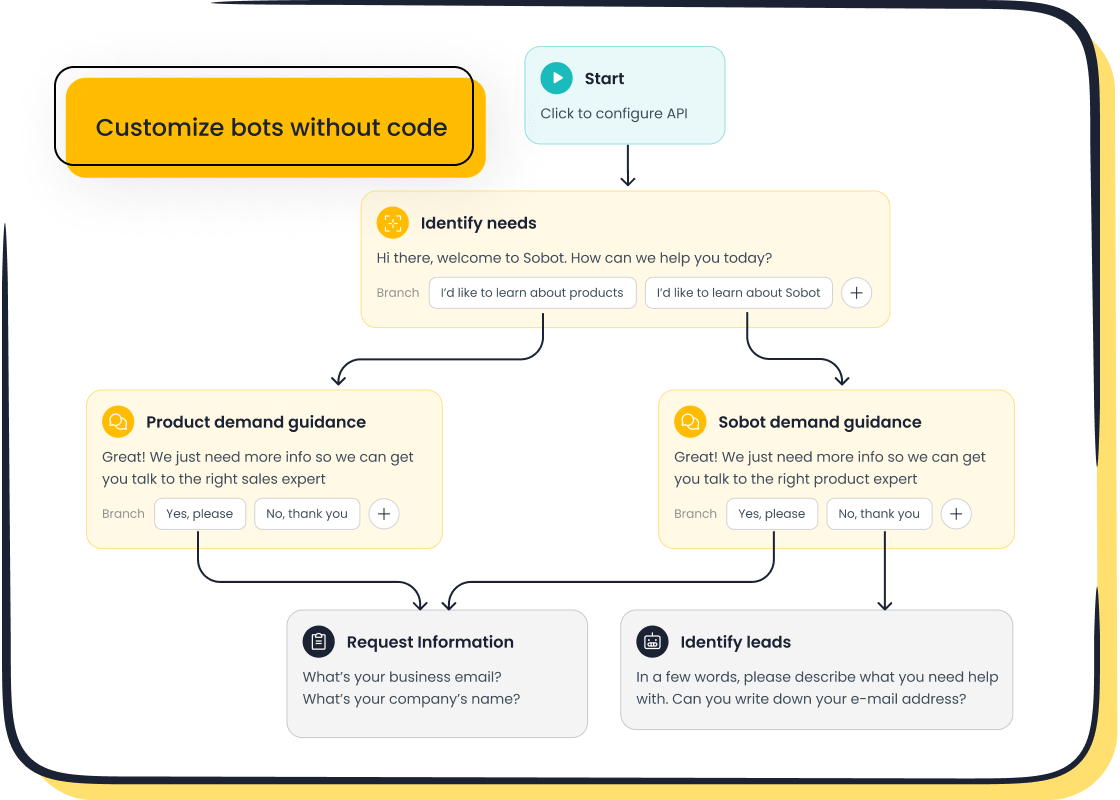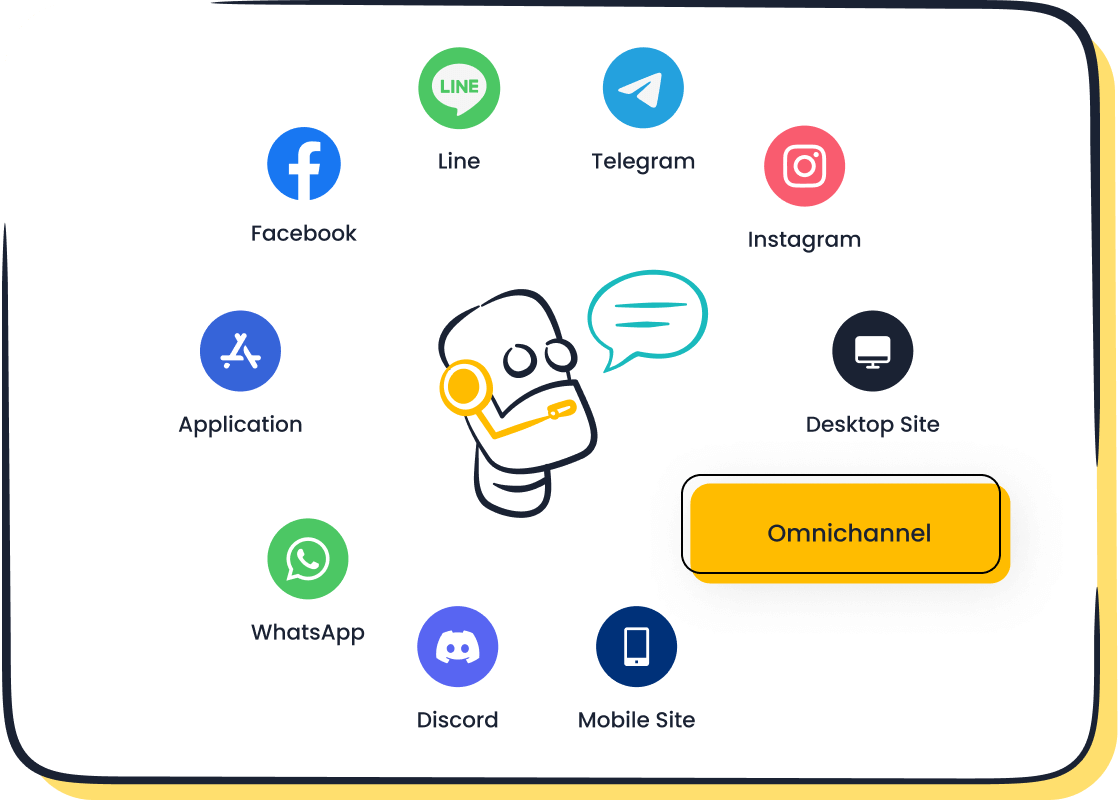Customer journey optimisation made easy in 7 clear steps

You can make customer journey optimization simple and effective for your business. By focusing on customer journey optimisation, you see real gains in customer experience, satisfaction, and efficiency. Companies like Amazon and Spotify improved conversion rates and reduced drop-off by mapping and refining the customer journey. Sobot’s step-by-step guide helps you take action fast, no matter your industry. With Sobot AI, you unlock tools to boost customer satisfaction and optimize every stage of the customer journey. The numbers speak for themselves:
| Metric | Improvement |
|---|---|
| Sales Conversions | 15-20% increase |
| Service Costs | 20-50% reduction |
| Customer Satisfaction | 10-20% improvement |
Define Goals and Personas
Set Clear Objectives
You start customer journey optimization by setting clear goals. When you know what you want to achieve, you can measure your progress and make better decisions. Companies that define business objectives and KPIs first see big improvements. For example:
- Companies with clear goals in customer journey optimization see a 25% increase in customer satisfaction.
- Revenue can rise by 15% when you align your strategies with business objectives.
- Conversion rates improve by 25% through goal-oriented journey planning.
- Customer complaints drop by 20% when you focus on clear objectives.
You should use SMART goals—Specific, Measurable, Achievable, Relevant, and Time-bound. These help you track results and adjust your approach. For example, you might set a goal to reduce cart abandonment rate or increase customer retention. Regularly review your KPIs to keep them relevant. As more companies adopt AI-powered tools, clear goals help you get the most from customer journey optimization. Source: Gartner
Tip: Sobot’s omnichannel solution lets you track KPIs across all channels, making it easier to measure your progress and refine your user journey.
Identify Target Customers
You need to know who your customers are to optimize the customer journey. Start by collecting demographic data like age, gender, income, education, and location. Add behavioral data such as purchasing habits, brand loyalty, and decision-making processes. Combine these insights to build detailed personas.
- Demographic info: age, gender, education, job title, industry, location
- Behavioral data: needs, buying behavior, loyalty, decision-making
- Psychographics: lifestyle, values, interests, motivations
- Goals and pain points: what your customers want and what challenges they face
You can gather this data from surveys, interviews, website analytics, and customer support records. Sobot’s omnichannel strategies help you integrate data from every touchpoint, giving you a full view of your user journey. When you create personas like “Savvy Shopper Sarah,” you make it easier to personalize the customer journey and improve customer journey optimization.
Map the Customer Journey

Outline Key Stages
To achieve effective customer journey optimization, you need to map the customer journey from start to finish. Begin by visualizing each step your customers take, from the first time they hear about your brand to when they become loyal advocates. This process helps you see where customers interact with your business and how they feel at each stage.
Tip: Use flowcharts or diagrams to make your customer journey map clear and easy to understand.
A typical customer journey map includes these key stages:
- Awareness: Customers discover your brand through ads, social media, or word of mouth.
- Consideration: They compare your products or services with others.
- Decision: Customers make a purchase or sign up.
- Retention: They use your product and may contact support.
- Advocacy: Satisfied customers recommend your brand to others.
| Key Stage/Component | Description |
|---|---|
| Goal | Set a clear goal for your customer journey map to guide user actions. |
| Touchpoint | List every interaction between customers and your brand. |
| Timeline | Track the time from the first to the last touchpoint. |
| Channel | Note the channels customers use, like chat, email, or phone. |
| Experience | Record customer feedback and emotions at each stage. |
Healthcare and B2B companies have improved satisfaction and conversion rates by mapping the customer journey from awareness to advocacy. Regularly update your customer journey map to reflect changes in customer behavior.
Identify Touchpoints
You must identify every point where customers interact with your business. These customer touchpoints can include your website, social media, live chat, phone calls, and even in-store visits. A detailed customer journey map shows all these moments, helping you spot gaps or friction.
Sobot’s unified workspace makes it easy to map the customer journey and track touchpoints across all channels. You get a 360° view of each user journey, which helps you analyze engagement, satisfaction, and conversion rates. By using customer journey analytics, you can measure key metrics like customer satisfaction, churn, and product usage. This approach supports continuous improvement and better customer journey optimization.
Note: Assign specific metrics to each stage of your customer journey map. Track these regularly to find areas for improvement.
Spot Pain Points
Gather Feedback
You need to listen to your customers if you want to improve the customer journey. Collecting feedback helps you identify pain points that slow down or frustrate your users. You can use surveys, live chat, product reviews, and social media to gather honest opinions. Short surveys work best—companies see a 30% higher completion rate when surveys have fewer than 10 questions. Brands like Airbnb and Apple use targeted feedback to improve their products and services. When you act on feedback, you can boost customer satisfaction by 25% and increase loyalty by 20%.
Tip: Always close the feedback loop. Let customers know how their input leads to changes. This builds trust and keeps them engaged.
Sobot’s AI Chatbot makes feedback collection easy. It can send instant surveys after each interaction and gather real-time responses across channels. The chatbot also analyzes feedback to spot common issues, helping you focus on what matters most for customer journey optimization.
Analyze Data
After you collect feedback, you need to analyze the data to find patterns. Use analytics to identify pain points in the customer journey. Look for trends like slow response times, confusing navigation, or inconsistent support. Key metrics such as Customer Effort Score (CES), repeat purchase rates, and customer satisfaction scores help you measure where friction occurs. For example, companies that track these KPIs can reduce resolution times by 25% and improve satisfaction by 20% (source).
Sobot’s omnichannel solution brings all your customer data into one workspace. The AI-powered system highlights pain points and opportunities for improvement. You can use these insights to make changes that drive better customer journey optimization. By using tools like Sobot, you ensure you identify pain points quickly and act on them before they impact your business.
- Common pain points found through analytics:
- Lack of personalization
- Fragmented experiences across channels
- Slow response times
- Difficult website navigation
- Inconsistent support
Spotting these issues early helps you deliver a smoother customer journey and unlocks more value for your business.
Personalize Customer Experience

Use AI and Automation

You can transform your customer journey by using AI and automation. Sobot’s AI Chatbot gives you the power to deliver personalized, multilingual, and 24/7 support. This means your customers get help in their language, at any time, on any channel. AI-driven tools like Sobot’s chatbot make it easy to answer common questions, suggest products, and guide users through each step of the customer journey.
- 84% of IT leaders say AI improves customer service (Salesforce).
- AI in service organizations has grown from 24% to 45% since 2020.
- AI helps agents serve customers faster and more accurately, boosting customer engagement.
- Personalized email subject lines increase open rates by 26%, and segmented campaigns can raise revenue by 760%.
Sobot’s chatbot uses machine learning to detect emotion and intent, so you can enhance personalization at every touchpoint. This leads to an enhanced customer experience and higher customer engagement. AI also handles routine tasks, freeing your team to focus on complex issues and build stronger relationships.
| Metric | Personalized | Non-Personalized | Improvement |
|---|---|---|---|
| Click-Through Rate | 8.5% | 6.3% | +35% |
| Time on Page (sec) | 145.3 | 98.7 | +47% |
| Conversion Rate | 3.2% | 2.1% | +52% |
These numbers show how AI and automation drive better results in customer engagement and conversion.
Tailor Interactions
You can make every step of the customer journey more meaningful by tailoring interactions. Sobot’s omnichannel solution lets you collect data from every channel, so you understand what your customers want and need. When you use this data, you can send the right message at the right time, making each touchpoint personal and relevant.
- Tailored communications at key touchpoints meet specific needs and build loyalty.
- Personalizing messages and offers increases satisfaction and trust.
- Consistent, relevant interactions across channels create a strong brand identity and boost customer engagement.
Sobot’s tools help you monitor feedback and adjust your approach, so you always deliver a customer experience that feels unique. When you personalize each interaction, you show customers they matter, which increases retention and loyalty. A review of 293 studies found that personalized touchpoints have a big impact on customer loyalty and overall experience.
Tip: Use Sobot’s chatbot to gather feedback and analyze sentiment. This helps you refine your customer journey and enhance personalization at every stage.
Optimize Touchpoints
Remove Friction
You can boost conversion rates by removing friction from every step of the customer journey. Friction happens when customers face obstacles, delays, or confusion. Companies like Chipotle and Dreams Hotel have shown that making access to products and services fast and easy leads to higher conversion and better customer experience. For example, Chipotle’s digital kitchens let customers order food quickly and contact-free, which increased satisfaction during the pandemic.
| Aspect of Customer Experience | Description | Example Case Study |
|---|---|---|
| On-demand access | Fast, easy ordering | Chipotle Digital Kitchens |
| Multi-channel switching | Seamless movement between channels | Dreams Hotel voice translation |
| Trustworthy browsing | Safe, reliable options | Trusted marketplaces |
You should design each touchpoint in the customer journey to be simple and clear. Sobot’s omnichannel solution helps you integrate omnichannel strategies, so customers can switch between chat, email, and phone without repeating themselves. This seamless support removes barriers and keeps conversion high. Studies show that careful timing and frequency of feedback requests also reduce friction and improve engagement.
Tip: Remove friction in “have-to” tasks, but keep some steps in payments for security and customer welfare.
Streamline Processes
Streamlining processes at every touchpoint in the customer journey leads to faster conversion and higher satisfaction. You can start by looking for bottlenecks or repetitive tasks that slow down your team or frustrate customers. Lean Six Sigma and other models show that continuous monitoring and improvement help companies like Amazon and Apple deliver smooth, efficient service and boost conversion.
Follow these steps to streamline your customer journey:
- Assess workflows to find bottlenecks and wasted steps.
- Collect feedback from customers and staff about pain points.
- Use automation tools like Sobot’s AI Chatbot and Ticketing System to handle routine questions and route issues quickly.
- Standardize responses and procedures for consistent service.
- Train your team to solve problems fast and use process guides.
Sobot’s automation features let you handle high volumes of requests, keep customers updated, and speed up resolution. When you streamline support, you see faster response times, more conversions, and a better customer experience. Measuring KPIs like conversion rate, Net Promoter Score, and retention helps you track progress and keep improving the customer journey.
Measure and Improve
Track Key Metrics
You need to measure your progress to make customer journey optimization work. Start by tracking key metrics at every stage of your customer journey map. These metrics show you what works and what needs to change. You can use tools like customer experience analytics, journey mapping software, and feedback surveys to collect data. Sobot’s reporting tools help you see all your numbers in one place, making it easy to spot trends and measure conversion.
| Measurement Tools / Metrics | Description | Statistical Evidence Provided |
|---|---|---|
| Customer Experience Analytics | Track purchase frequency, average order value, conversion rates | Show impact of journey improvements with KPIs |
| Journey Mapping Tools | Visualize interactions, capture real-time feedback | Identify touchpoints and optimize with data |
| Customer Feedback Metrics (NPS, CSAT, CES) | Measure satisfaction and effort | Show changes in sentiment and loyalty |
| AI-driven Sentiment Analysis | Analyze surveys, reviews, and social media | Detect trends and recurring issues |
| Continuous Monitoring & Reporting | Automated tracking and AI-generated reports | Enable ongoing measurement and optimization |
You should focus on metrics like conversion, customer satisfaction, Net Promoter Score, and retention. For example, OPPO used Sobot’s analytics to track their customer journey map. They saw an 83% chatbot resolution rate and a 57% increase in repurchase rate. These results show how tracking key metrics leads to better customer journey optimization and higher conversion (OPPO case study).
Tip: Use your customer journey map to assign metrics to each touchpoint. This helps you see where conversion drops and where you can improve.
Adjust Strategies
You need to act on what you learn from your customer journey map. When you see a drop in conversion or a pain point, adjust your strategy right away. Sobot’s unified workspace lets you share insights with your team and make changes fast. You can update your customer journey map, test new ideas, and measure the results.
Follow these steps for continuous improvement:
- Collect feedback and key metrics from every touchpoint on your customer journey map.
- Share insights with your team and brainstorm solutions.
- Make changes to your customer journey map and track the impact on conversion.
- Follow up with customers to show you value their input.
- Repeat the process to keep improving.
Real-world customer journey map examples show that companies who adjust strategies based on data see higher conversion and better customer satisfaction. Sobot’s reporting tools and AI help you spot trends and act quickly. This approach keeps your customer journey map up to date and supports continuous improvement.
Note: Continuous measurement and quick adjustments help you stay ahead of customer needs and market changes.
Foster Loyalty
Building long-term relationships with your customers is the key to sustainable growth. When you focus on loyalty, you turn satisfied buyers into brand advocates who share their positive experiences. Research shows that increasing customer retention by just 5% can boost profits by up to 95% (Bain & Company). Most future revenue comes from existing customers, and loyalty leaders grow revenues 2.5 times faster than competitors. You can use the customer journey to create moments that matter and encourage repeat business.
Encourage Advocacy
You can inspire customers to become advocates by delivering exceptional customer engagement at every stage of the customer journey. When you act on feedback and provide proactive support, you show customers that you value their voice. For example, companies that use proactive engagement strategies see a 15% increase in customer retention and a 20% rise in satisfaction. Sobot’s proactive engagement tools help you send timely updates, personalized offers, and helpful tips during the post-purchase experience. This approach keeps your brand top-of-mind and encourages customers to share their stories with others.
Tip: Encourage reviews and referrals by making it easy for customers to share feedback after each interaction.
Support Retention
Supporting customer retention means understanding what keeps customers coming back. Personalized experiences and quick responses play a big role. Studies show that 86% of satisfied customers are willing to pay more, and 91% will not return after a bad experience. You can use customer engagement tools like Sobot’s omnichannel solution to track satisfaction, gather feedback, and resolve issues before they lead to churn. Customer satisfaction surveys such as CSAT and NPS help you spot problems early in the customer journey. By acting on this data, you boost customer satisfaction and build loyalty that lasts.
- Retaining customers is 5 to 25 times cheaper than acquiring new ones.
- Companies focusing on retention are 60% more profitable.
- Personalized engagement increases impulse purchases by 49%.
Note: Use on-page surveys and behavioral analytics to understand pain points and improve the customer journey.
You can make customer journey optimisation simple by following these seven steps:
- Define goals and personas
- Map the customer journey
- Spot pain points
- Personalize the customer journey
- Optimize touchpoints
- Measure and improve
- Foster loyalty
Companies using this approach have seen up to a 20% increase in satisfaction and a 30% rise in conversion rates. Sobot’s solutions help you track, analyze, and improve every customer journey. Start today, share this guide with your team, and contact Sobot for support.
FAQ
What is customer journey optimization?
Customer journey optimization means improving every step your customers take with your business. You use data, feedback, and tools like Sobot to make each stage smoother. This process increases conversion and customer satisfaction. Companies see up to a 20% boost in satisfaction when they optimize journeys.
How does a customer journey map help my business?
A customer journey map shows every interaction your customers have with your brand. You can spot pain points, improve conversion, and raise customer satisfaction. Sobot’s unified workspace lets you track and update your customer journey map easily for better results.
Why should I use Sobot for customer journey optimization?
Sobot offers AI-powered chatbots, omnichannel support, and real-time analytics. You can automate tasks, personalize support, and measure conversion. OPPO used Sobot and saw an 83% chatbot resolution rate and a 57% increase in repurchase rate (see case study).
What metrics should I track for customer journey optimization?
You should track conversion rates, Net Promoter Score (NPS), customer satisfaction (CSAT), and retention. Sobot’s reporting tools help you monitor these metrics. Tracking these numbers helps you see where your customer journey map needs improvement.
Can Sobot help improve customer satisfaction and retention?
Yes! Sobot’s solutions let you gather feedback, automate responses, and personalize every touchpoint. You can boost customer satisfaction and keep customers coming back. Businesses using Sobot report higher conversion and loyalty rates.
Tip: Start with a clear customer journey map and use Sobot’s tools to optimize every step for better results.
See Also
A Complete Guide To Deploying Omnichannel Contact Centers
Effective Strategies To Improve Live Chat Customer Experience
Comprehensive Overview Of Omnichannel Call Center Platforms
Ways Artificial Intelligence Enhances Customer Service Productivity
